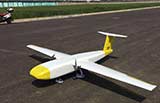Full text of keynote speech of China's top legislator at Belt and Road Summit in Hong Kong
(Xinhua) Updated: 2016-05-18 16:27Ladies and Gentlemen,
In March 2015, China's National Development and Reform Commission, joined by other government departments, issued the Vision and Actions on Jointly Building the Silk Road Economic Belt and the 21st Century Maritime Silk Road.
Following this roadmap, we had a good beginning during the past year. Between China and the countries along the routes, there were frequent mutual visits at high levels of the government as well as closer interactions between governments, parliaments, political parties and at sub-national levels.
Common understanding was reached in a number of areas, and over 30 cooperation agreements were signed. China and those countries worked hand in hand to seek the largest denominator in win-win cooperation and common development.
A package of major projects has started in the building of the China-Pakistan Economic Corridor. An overall plan is being made for the China-Mongolia-Russia economic corridor, partnering a number of cooperation projects. In pursuit of infrastructure connectivity, China's international cooperation on production capacity is well underway in more than 10 key areas, including equipment manufacturing, automobile and electronics. Over a thousand container trains have traveled between China and Central Asia or Europe.
A functional international transport mechanism linking the two ends of the Eurasian continent is up and running. The Asian Infrastructure Investment Bank (AIIB) has entered into operation, and the Silk Road Fund and several other multilateral or bilateral cooperation funds are providing continuous financing support to the Belt and Road Initiative. The RMB cross-border trading has expanded. The joint application to inscribe the portion of the Silk Road that passes through China and Central Asia on the World Heritage List was successful, and the application for the maritime Silk Road has been made.
Interactions have increased in culture, education, science and technology, tourism, business and other areas. All these have proved that the Belt and Road Initiative enjoys a promising future.
Ladies and Gentlemen,
This summit on the Belt and Road takes place in Hong Kong not only because Hong Kong is a Special Administrative Region of China, but also because it is a key link for the Belt and Road.
In designing its 13th Five-Year Plan and the Vision and Actions for the Belt and Road, the central government has made it a major policy to support Hong Kong's participation in the Belt and Road development.
We believe that Hong Kong, with the following unique advantages, will be able to make important contribution to this endeavor.
First, advantages from Hong Kong's location. In terms of maritime transport, Hong Kong sits on the busiest international sea route and boasts developed port economy. It is also an important gateway in the landscape of China's opening-up. On the land, Hong Kong is next to Guangdong Province.
With modern means of connectivity, Hong Kong has easy, efficient and economic access to China's mainland, thus serves as a hub of transportation and international communication. In terms of air transport, Hong Kong has the world's busiest international airport, topping the list in passenger and goods transport.
Furthermore, Hong Kong borders on the Pearl River Delta, one of the three economic growth poles of China and the pioneer of China's institutional and structural reform and the country's pursuit of innovation-driven development.
Moreover, Hong Kong is next to Shenzhen, a center for innovation and entrepreneurship. As a natural partner, Hong Kong can join forces with China (Guangdong) Pilot Free Trade Zone, the Qianhai Shenzhen-Hong Kong cooperation zone and Fujian Province, which is a core area for the 21st Century Maritime Silk Road. Hong Kong's strength in the service sector and that of its neighboring provinces in manufacturing have great potential in exploring the international markets.
Second, advantages as first mover of opening-up and cooperation. As a free port from the very beginning and the world's freest economy for 22 years in a run, Hong Kong maintains close economic and trade relations with most countries and regions in the world.
After the return of Hong Kong to the motherland, an all-round, wide-ranging and high-level form of exchange and cooperation between the mainland and Hong Kong has taken shape. Many opening-up policies of the mainland were first experimented and practiced in Hong Kong.
This has brought experience for the mainland to open wider, and offered rare opportunities for Hong Kong itself. This offers a good foundation for Hong Kong to seize new opportunities arising from the Belt and Road Initiative and achieve new progress.
Third, advantages in professional services. Hong Kong is a developed economy with a diverse and advanced service sector, an important international financial, shipping and trade center with the world's largest offshore RMB market, and one of the world's most favorite places of arbitration.
In accounting, law, consultancy, tourism, infrastructure development, engineering design and other fields, Hong Kong may offer a variety of services to countries along the Belt and Road routes.
I understand that Hong Kong consultancy companies were appointed by the Chinese Ministry of Commerce as project supervisors in two Chinese assistance infrastructure projects in Nepal and Cambodia.
Many buildings in Nepal collapsed in the devastating earthquake, yet the projects under their supervision were largely intact. This shows the superior quality of Hong Kong's professional services, and proves that such services have a big role to play in the Belt and Road development.
Fourth, advantages gained from cultural and people-to-people interactions. For decades, Hong Kong has been an important window for cultural exchanges between the East and the West, and for interaction among various civilizations. This has created a distinctive culture that integrates the Chinese and Western civilizations.
In an open and inclusive cultural atmosphere, Hong Kong has inherited and carried forward the traditional Chinese culture, and created a modern culture of its own, represented by movies, TV and music programs, that has a major influence in the wider Chinese language circle. Hong Kong's martial arts movies have loyal fans across the world and have influenced generations of people.
Southeast Asia is an important region for Belt and Road development thanks to people-to-people connections. Lots of ethnic Chinese went there from Guangdong via Hong Kong in the early years, and many ethnic Chinese doing business there have their origin in Guangdong, which like Hong Kong, is part of the Cantonese culture circle. This laid down the cultural foundation for deepening exchange and cooperation.
- New technology to encourage Chinese 'medical tourists' to Australia
- Xi says it's time for philosophy to flourish
- One Country, Two Systems: Top legislator sees bright future
- New app to guide visually disabled
- Father and son poisoned by disinfectant in McDonald's drink
- Chinese in their 40s the most enthusiastic about Shanghai Disneyland
- Supply-side reform should be pushed resolutely, says Xi
- Rail capacity boosted under new operational plan
- Media mogul buys Song Dynasty letter for $31.7m
- China becomes No 1 in voluntary organ donations in Asia








